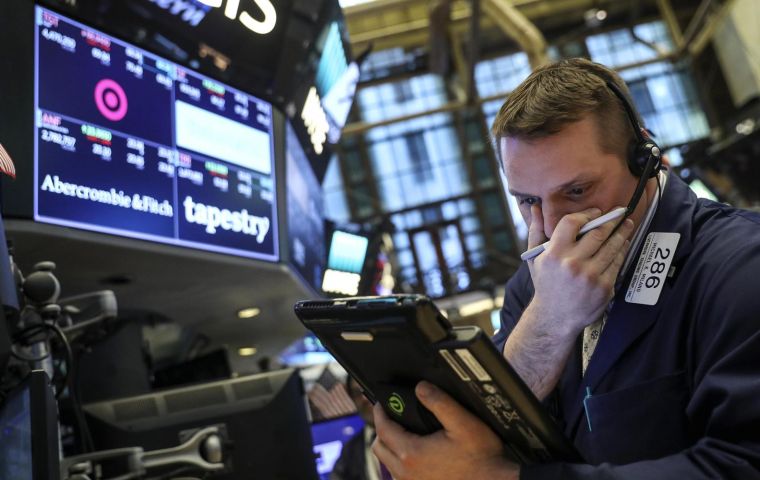MercoPress. South Atlantic News Agency
The yield for 10-year US Treasury bonds breaks 3% yield rattling markets
 The yield on the benchmark bond inched past 3% on Tuesday, a level that many market players deem dangerous for investments and the economy.
The yield on the benchmark bond inched past 3% on Tuesday, a level that many market players deem dangerous for investments and the economy. The 10-year U.S. Treasury yield has broken through the “psychologically important” level of 3%, leaving analysts contemplating what it could mean the future of asset markets and, more importantly, the global economy. The yield on the benchmark bond — which helps to set prices for debt instruments all over the world — inched past 3% on Tuesday, a level that many market players deem dangerous for investments and the economy.
With yields rising — which move inversely to a bond's price —market participants are expecting higher interest rates from central banks. And as a result of these higher interest rates, companies will have higher costs when borrowing money and will have less room to increase salaries, to invest, and to give returns to shareholders — making equities less attractive. As the 10-year note is used to set mortgage rates, then it can also reduce people's ability to spend.
Billionaire bond investor Jeffrey Gundlach said on Monday that if the 10-year yield were to rise above 3%, then traders would start betting that rates would go even higher. This would then continue fueling fears that a market crash and a potential crisis could be around the corner.
However, some others argue that the U.S. Federal Reserve still has lots of room to hike rates, without hurting markets, as they had been so low following the 2008 financial crash.
“Do 3% yields spell the end of the stock market? Will 3% yields trigger the global market reset and the end of times? Course not,” Bill Blain, head of capital markets at Mint Partners, said in a note on Tuesday night.
More importantly, rather than looking at the yield on the 10-year note, comparing it with shorter-term paper could be a better indicator. The yield on the two-year Treasury note also hit a multiyear high on Tuesday, reaching 2.5% for the first time since September 2008.
The current difference between the short-term and longer-term yields means that investors see debt that is to be repaid in two years being nearly as risky as lending it for 10 years. And in a normal functioning economy lending in the short term has fewer risks — the underlying thought is that you can more easily predict what's happening tomorrow rather next month.




Top Comments
Disclaimer & comment rulesCommenting for this story is now closed.
If you have a Facebook account, become a fan and comment on our Facebook Page!